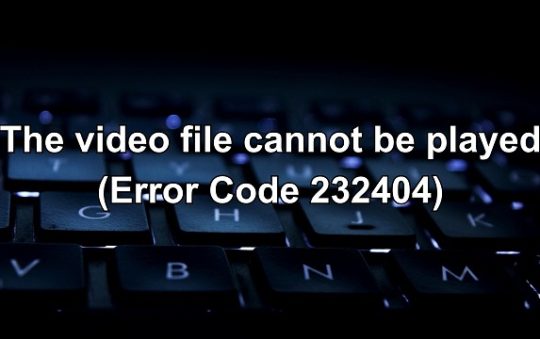Ethical Hacking Basics: Unlocking the Secrets of Cybersecurity
Welcome to the fascinating world of ethical hacking! In this article, we will dive into the tools and techniques that form the foundation of this highly sought-after skill set. Ethical hacking basics, also known as penetration testing, involves identifying vulnerabilities in computer systems, networks, or web applications to strengthen their security. With cyber threats increasing in sophistication, organizations are turning to ethical hackers to proactively protect their assets from unauthorized access and potential breaches. Whether you are an aspiring cybersecurity professional or simply curious about how hackers work, this guide will provide you with essential insights to get started on your ethical hacking journey.
Understanding the Role of an Ethical Hacker:
Before we delve into the tools and techniques of ethical hacking, it is crucial to understand the role of an ethical hacker. Unlike malicious hackers who exploit vulnerabilities for personal gain, ethical hacking basics are cybersecurity experts who work within legal boundaries to identify and fix weaknesses. Their objective is to determine whether a system’s defenses are robust enough to withstand attacks by simulating real-world scenarios. Ethical hackers use the same techniques and technologies as their malicious counterparts, but with the explicit consent and cooperation of the organization they are assessing.
The Importance of Ethical Hacking:
Ethical hacking plays a vital role in ensuring the security and integrity of computer systems, networks, and applications. By actively seeking vulnerabilities, ethical hackers help organizations identify weak points before malicious actors can exploit them. They provide valuable insights into the effectiveness of existing security measures and recommend improvements to mitigate potential risks. In today’s interconnected world, where sensitive information is constantly at risk, ethical hacking has become an indispensable tool in safeguarding digital assets.
Setting Up Your Ethical Hacking Environment:
Before you can begin your ethical hacking journey, you need to set up a suitable environment for your testing activities. While it is possible to practice ethical hacking on your personal computer, it is highly recommended to create a separate lab environment specifically dedicated to your experiments. This ensures that any unintended consequences or accidental damage caused by your testing activities are contained within the controlled environment. Here are some key considerations when setting up your ethical hacking lab:
1. Hardware Requirements:
Building a dedicated hacking lab requires hardware resources to support the various tools and technologies you will be using. Ideally, you should have a powerful computer with adequate processing power, memory, and storage. Additionally, it is advisable to have multiple virtualization platforms, such as VMware or VirtualBox, to create virtual machines for testing different operating systems and network configurations.
2. Networking Setup:
In a hacking lab, you will need to set up a network that emulates real-world scenarios. This allows you to practice techniques such as network scanning, sniffing, and exploiting vulnerabilities. It is recommended to have a physical router or switch to connect your lab machines and manage network traffic effectively. Additionally, consider using virtual networks and network segmentation to simulate complex network architectures.
3. Operating Systems:
As an ethical hacker, you should be comfortable working with various operating systems. It is advisable to have multiple machines running different operating systems, such as Windows, Linux, and macOS, to gain hands-on experience with their unique characteristics. This diversity enables you to understand how vulnerabilities and exploits differ across different platforms.
4. Essential Software and Tools:
To conduct ethical hacking basics effectively, you will need a wide range of software and tools at your disposal. Here are some essential categories of tools that every ethical hacker should be familiar with:
- Vulnerability Scanners: These tools help you identify known vulnerabilities in systems or networks.
- Password Crackers: Password cracking tools are used to test the strength of passwords and discover weak credentials.
- Packet Sniffers: These tools allow you to capture and analyze network traffic for potential vulnerabilities or sensitive information.
- Exploit Frameworks: Exploit frameworks provide a set of pre-built tools and exploits to help you discover and leverage vulnerabilities.
- Forensics Tools: Forensics tools are used to investigate security incidents, collect evidence, and analyze system logs.
While there are numerous tools available, it is important to select the ones that align with your specific needs and objectives. Remember, ethical hacking is a constantly evolving field, so staying up-to-date with the latest tools and techniques is crucial.
Applying Ethical Hacking Techniques:
Now that you have set up your ethical hacking environment, let’s explore some fundamental techniques used by ethical hackers to identify vulnerabilities and secure systems.
1. Reconnaissance:
Reconnaissance, also known as information gathering, is the initial phase of ethical hacking. This involves gathering as much information as possible about the target system or network before launching any attacks. Ethical hackers use both passive and active techniques to collect data, including querying public databases, analyzing DNS records, and conducting network scans.
2. Scanning and Enumeration:
Once you have gathered sufficient information, the next step is to scan the target system or network for open ports, services, and potential vulnerabilities. Ethical hackers use a variety of scanning tools to accomplish this, such as Nmap, Nessus, or OpenVAS. Enumeration follows scanning and involves actively probing the target system for additional information, such as user accounts, network shares, and system configurations. This phase helps ethical hackers understand the target environment better and identify potential entry points.
3. Vulnerability Assessment:
After scanning and enumeration, ethical hackers conduct a vulnerability assessment to identify weaknesses in the target system or network. This involves using automated vulnerability scanners or manually analyzing the findings to pinpoint vulnerable software versions, misconfigurations, or poor security practices. The vulnerabilities discovered during this phase provide crucial insights into potential attack vectors that could be leveraged by malicious actors.
4. Exploitation:
One of the most critical phases of ethical hacking is exploitation, where the ethical hacker attempts to exploit the identified vulnerabilities to gain unauthorized access or control over the target system. By successfully exploiting a vulnerability, the ethical hacker proves its existence and highlights the need for remediation. However, it is essential to exercise caution and obtain proper authorization before attempting any exploitation, as unauthorized actions can have severe consequences.
5. Post-Exploitation:
After successfully compromising a system, the ethical hacker enters the post-exploitation phase, where the objective is to maintain access and gather additional information. This involves installing backdoors, establishing remote access mechanisms, and searching for sensitive data or credentials. The post-exploitation phase helps ethical hackers understand the potential impact of a successful attack and provides recommendations for improving security measures.
Continuing Your Ethical Hacking Journey:
Congratulations! You now have a solid understanding of the tools and techniques used in ethical hacking. However, ethical hacking is a vast and ever-evolving field that requires continuous learning and practice. Here are some recommendations to continue your ethical hacking journey:
1. Expand Your Knowledge:
Stay updated with the latest cybersecurity trends, news, and technologies. Follow reputable blogs, forums, and security communities to learn from experienced professionals and gain different perspectives.
2. Undertake Certifications:
Certifications such as Certified Ethical Hacker (CEH), Offensive Security Certified Professional (OSCP), or GIAC Certified Penetration Tester (GPEN) can enhance your credibility and demonstrate your expertise to potential employers.
3. Join Capture the Flag (CTF) Competitions:
CTF competitions provide hands-on experience in solving real-world cybersecurity challenges. Participating in CTFs not only sharpens your technical skills but also allows you to network with like-minded individuals.
4. Engage in Bug Bounty Programs:
Bug bounty programs provide an opportunity to earn rewards by responsibly reporting vulnerabilities to organizations. Platforms like HackerOne and Bugcrowd connect ethical hackers with companies willing to pay for their expertise.
5. Contribute to Open-Source Projects:
Open-source projects offer valuable learning opportunities and allow you to collaborate with the global cybersecurity community. Contributing code, documenting vulnerabilities, and sharing your knowledge can make a significant impact.
As you embark on your ethical hacking journey, always prioritize ethical considerations and obtain proper authorization before performing any testing. Remember, the goal is to improve security, protect user data, and contribute to a safer digital environment.
Conclusion:
Good luck in your endeavors and may you become a formidable force in the realm of ethical hacking!. For more visit Techy Robo.


